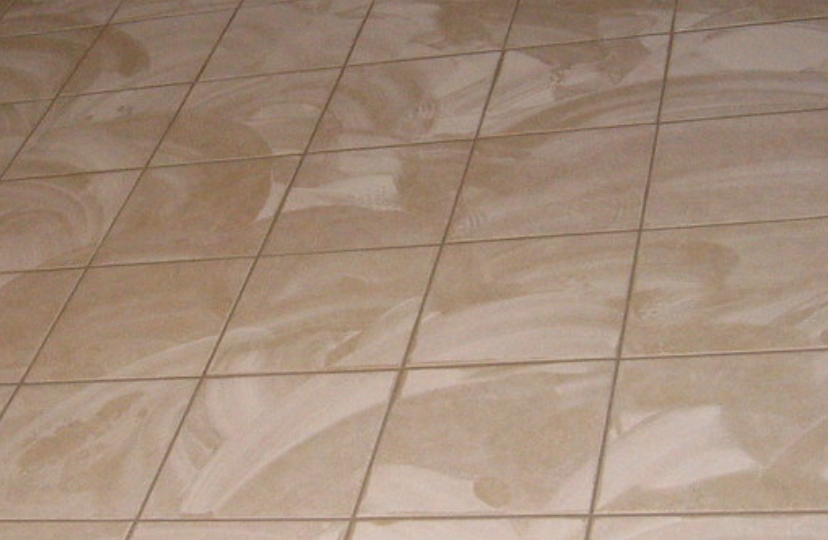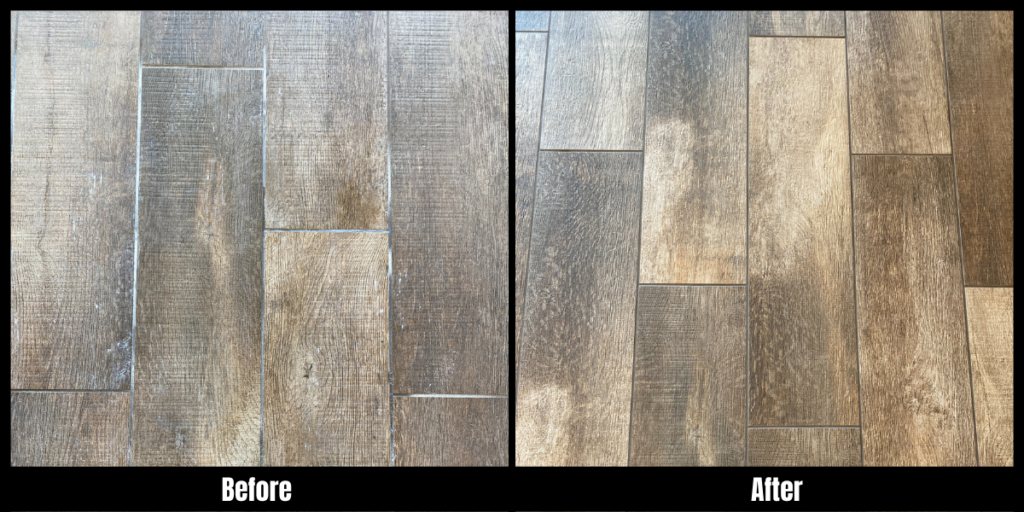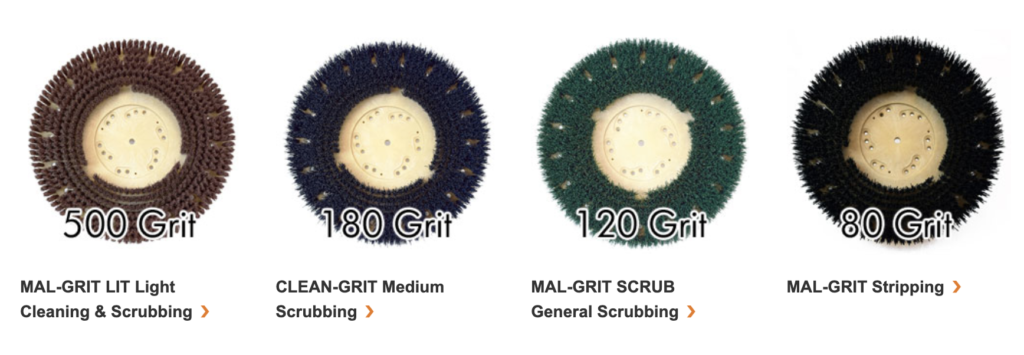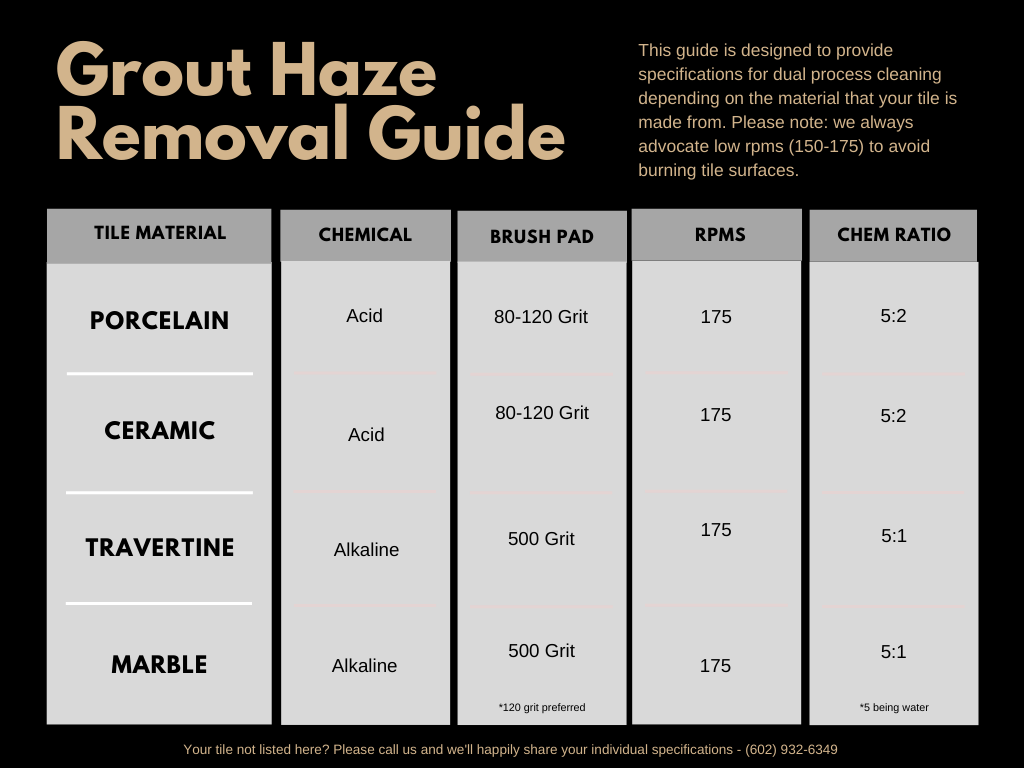What Usually Causes Hazy Tile Surfaces?
One word, grout haze.

Grout haze is most common in newly built homes that have had new tile floors installed by a contractor or restoration company. This is something that occurs when a small portion of grout residues have been left behind from grout repair services or new installations. This can happen when not enough water is used alongside the sponging process, or if the grout is allowed to dry for too long before wiping away from the tile surfaces. The installation of textured tiles can also be more tricky than usual, because the textured areas tend to capture and retain grout residues more than smooth surfaces.
Recommended Course of Action
If you’ve been left with a hazy tile floor that you believe is caused by grout residues, then you should always start with a small test area. You can do this by scrubbing an area with soapy water and allowing it to dry. If you end up getting a good result then DIY cleaning is an option, however it is not recommended as some soap residues can cause long term or even permanent damage to some tile and grout materials.
If your test area does not meet your expectations, we recommend contacting a professional tile and grout cleaning company in your local area. You can find various “steam cleaning” services and other services very similar to that, however we recommend something very specific for grout haze removal projects. You’re going to want to look for something called a dual process cleaning. Not all cleaning companies offer this.
Dual Process Cleaning: Step-By-Step
When you hire a local service provider to come out and perform a dual process cleaning, you should know what to expect beforehand. In this section we’ll go over what the industry standard is for a true dual process cleaning and each step that goes behind it from beginning to end.
Plastic wrap and corner guards
Pretreating
Dwell time
Agitation
Rotary floor machine
Pressure Wash and extraction aka steam cleaning
Evap
Sealing
The End Result
When done correctly, a dual process cleaning does an excellent job at removing grout haze. Below you can see our most recent grout haze removal job and the results we were able to get with the process.

A More in Depth Perspective
The big difference between a standard cleaning service and dual-process cleaning is the machines that are used to perform the task. Typically one machine is used for basic cleaning, many refer to this machine as a “turbo”. All in all turbos provide three major things; heat, water pressure, and suction aka extraction. While a turbo is great at reducing streaks when cleaning tile, it is not enough to effectively remove grout haze. This means that additional agitation is necessary to get the job done. This is when a dual-process cleaning is mandatory. A dual process cleaning utilizes a rotary floor machine, with a brush pad attachment. Brush pads can vary in stiffness and you should use a stiffness according to the material your tile is made of. You should always be careful to not use a brush pad that is too stiff, especially for softer stones such as travertine or marble as it can scratch or damage the tile surfaces.
Most times, people are led to believe that stiffer brush pads will scrub and clean surfaces more effectively. This is not always true because softer bristles may have a more thorough contact patch with the tile surface if it is textured and it may also clean grout better if the grout lines are recessed.
Here are a few different brush pads that can be used for tile and grout cleaning using a dual process –

The three major variables to consider when performing a dual process cleaning is the stiffness of the brush pad, water to solution ratio, and the pH balance of the cleaning solution itself. For grout haze removal, acid is usually the best solution to be used based on our findings. However, you should never use an acidic cleaner on natural stone tile floors. Acidic cleaners may cause serious etching and ruin the stone altogether. This can result in floors that are not fixable and will need to be replaced.
When removing grout haze, there are some risks involved. These risks can be mitigated by using the correct chemical, brush pad grit, chemical to water ratio, and rpms. Due to the risks associated with a dual process cleaning, we’ve created this infographic below to help you understand what specifications should be met for the type of tile that is in your home.

In Conclusion
Now that you understand the ins and outs of grout haze removal, it’s important that you follow these guidelines without deviation. This will ensure that the floors you’re cleaning will not be damaged and you will achieve great results once the job is complete. Don’t forget, DIY is always possible but it is of course recommended that you call a professional service provider to perform the services needed. This will ensure long lasting effects (if the company provides warranties alongside their services), and you can most likely expect good results altogether.
The team at Phoenix Tile And Grout Cleaning understands that cleaning equipment can be very expensive and require tons of training upfront. If you find that you’re increasingly less interested in DIY cleaning, and you would like to know the cost of grout haze removal services, please feel free to contact us and we will gladly provide you with a no obligation estimate for free.
